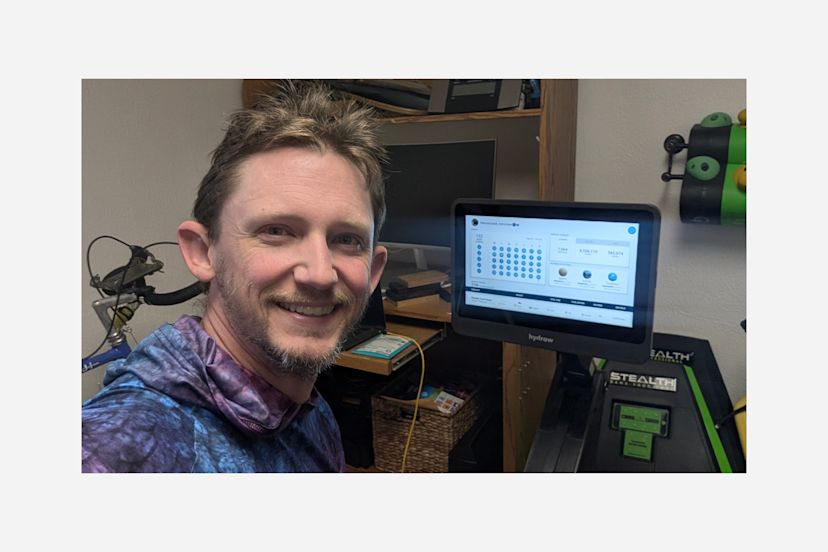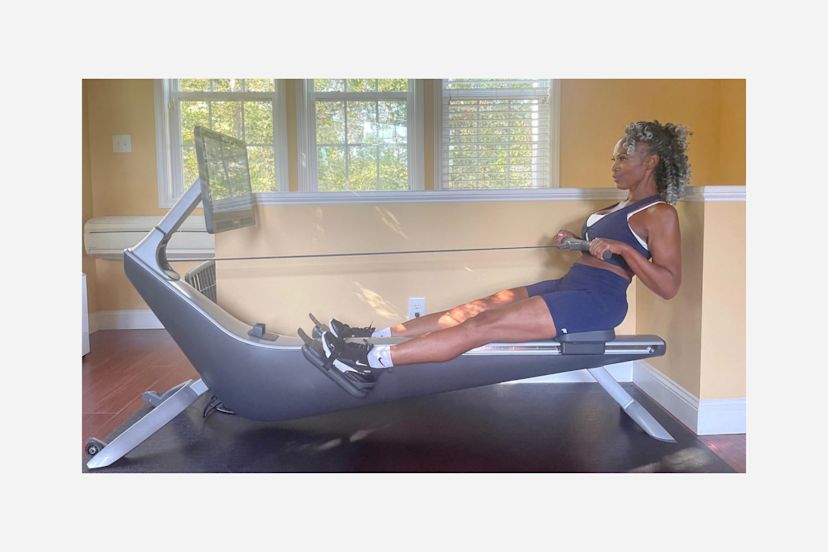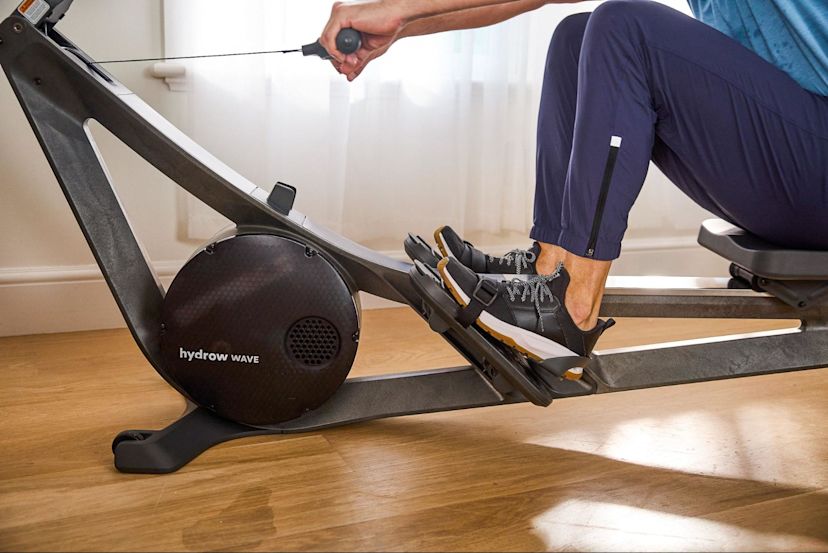No Pain, No Gain? Not Always.

Hydrow Chief Coach Justin Moore explains the essential difference between the positive and negative fitness results of good pain versus bad pain.
Just about everyone who exercises has heard the expression “no pain, no gain.” To make progress with your fitness and strength you often need to push yourself past the point of comfort and even sometimes to the point of “pain.” But not all pain is good, sometimes it can be extremely dangerous, even damaging. Knowing the difference between good and bad pain is essential to any long-term exercise program success.
Good Pain Defined
We prefer the term “discomfort” to “pain.” Discomfort, or positive stress, includes burning in the muscles, feeling like you can’t get enough oxygen, anxiety thinking “I’m not sure I can keep going at this pace,” and the fatigue of your muscles being maxed out during a challenging workout. Pushing through this type of discomfort places a stress on the body that, provided you have good nutrition and get enough rest after, will result in a stronger, fitter you. Here are a couple more terms to know:
Lactic Acid: When your body can no longer produce energy aerobically (with oxygen), it shifts to a system that burns sugar. If it uses this anaerobic (without oxygen) system a lot, you will feel the burn of lactic acid, which is the byproduct of anaerobic energy (like carbon dioxide is the byproduct of a gasoline combustion engine). The burn can feel painful, but it is good pain that will eventually go away, especially if you do a cool down.
DOMS (Delayed Onset Muscle Soreness): Often, if you participate in an activity that you haven’t done in a long time or if you push yourself unusually hard, you will feel fine after but the next day is a different story. Your muscles will feel tired (unrecovered) and sore to the touch. After rowing, you may feel this in your back, glutes, or shoulders. This muscle soreness should be in the thicker, middle region of the muscle (not near joints and tendons) and should go away within 48-72 hours.
Ways to Help Muscles Recover:
There are several important things you can do to help muscles recover and hopefully reduce DOMS.
1. Complete a cool down after every hard session (not required after Breathe workouts). This will help flush the muscles of waste (lactic acid) and bring nutrients and oxygen to your cells.
2. Hydrate and fuel well after training. Your body needs nutrients for recovery. Having a nice healthy snack and some water shortly after training (ideally within 30 minutes) will help your body bounce back quickly.
3. Stretch and work on mobility. Your body feels best when it moves well. Hydrow’s On the Mat strength and mobility sessions are designed to help keep the body in balance and accelerate your recovery after each session. To quote Hydrow Mobility Coach Peter Donohoe, “train, don’t strain.”
4. Use your foam roller. Rolling the muscles out after hard training helps eliminate waste from the cells and encourages good muscle glide. Think about the foam roller doing for your muscles what you do for your dirty kitchen sponge when you squeeze it out under fresh water. The squeeze pumps the bad stuff out, making room for the good stuff to get in.
Bad Pain Defined
Pain is a signal from the body that something is wrong and we encourage you to listen to it. It will feel different from the positive discomfort of exercise described above. These differences can include:
Sudden, Sharp Pain: Good pain will never be sudden nor sharp. Sharp pain is very clearly caused by a source other than effort and persistence. If you feel sudden or sharp pain, discontinue what you are doing immediately. In severe cases, consult your medical professional.
Joint or Connective Tissue Pain: Exercise should never result in pain in your joints or connective tissue. If you feel this type of pain, ice the area twice a day - 20 minutes on, 20 minutes off, and then 20 minutes on again and discontinue the exercise routine that led to it. If the pain does not go away in 3-7 days, consult with your medical professional. For severe pain, consult your healthcare provider immediately.
Muscular Pain that Does Not Resolve: The positive soreness associated with DOMS typically resolves itself in 48-72 hours. If you have a muscle that is very sore and stays sore for more than 72 hours, you may have an injury. Rest is the most important treatment, but if the pain is serious or persists for 7 days, consult your medical professional.
To increase your fitness, you will need to stress the body and feel discomfort, but using your Hydrow rowing machine should never be painful. Be mindful of your form and listen closely to how your Hydrow Athletes describe proper positioning during your rows and On the Mat workouts. This will help protect you from bad pain and give you maximum results (the good pain creating stuff). Maybe the new idiom should be “no-strain train for good-pain gain.” Sounds good to us!


